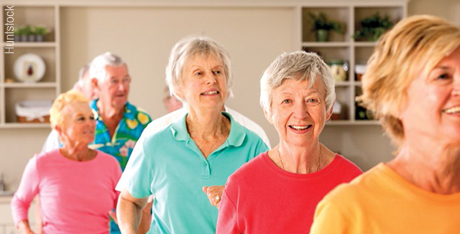Home: that place we should feel most safe and most protected. Unfortunately, it’s also a major source of injuries for senior citizens. According to the Centers for Disease Control and Prevention (CDC), one-third of adults aged 65 or older fall each year, and 20 to 30 percent of those who fall suffer moderate to severe injuries like hip fractures, head traumas or lacerations. In fact, most fractures in older adults are caused by falls, and up to 55 percent of those falls occur in the home.
The sad thing is, less than half of those who fall talk to their doctors about their tendency to stumble or lose their balance. If they did, they might learn some simple health checks that could go a long way toward keeping them safer.
Why do seniors fall? Actually, many reasons can be cited. Tripping over obstacles, dizziness and vertigo, vision problems, and lack of strength and balance are a few common ones.
To make matters worse, people who fall, even if they are not injured, will develop a fear of falling again. This fear prevents them from participating in activities where there is a risk of falling, which prevents them from doing things that are active, healthy forms of exercise. This only compounds the waning strength and balance issues they may be experiencing.
What can be done to prevent older adults from falling and sustaining other injuries around the home?
Exercise: Get regular exercise. Many seniors have lost strength in their legs and core stabilizing muscles (low back, abdominals and pelvic areas), and this can lead to a higher risk of falling. Join an exercise class in your area that emphasizes core strength and balance along with cardiovascular exercises. The more strength and stability a person has, the less likely they are to fall.
Health checkup: Have your doctor check to make sure your prescriptions are not causing side effects that impair balance, vision or mental alertness. Then have your eye doctor check your vision, ruling out any ocular disease or need for eyeglass prescription changes.
Remove trip hazards: Remove the potential hazards in your home like extra furniture, small tables, piles of books or magazines, and other clutter that you are often walking around. Make sure area rugs lie flat and don’t skid. Avoid putting things you use every day up in high places that require step ladders.
Improve stability: For extra stability, add railings where needed throughout your home. This includes shower stalls and bathtubs, around toilets and in stairways. In kitchens, the use of extension grippers to reach high objects helps avoid falls due to over-reaching. Kick steps can be added under lower cabinets, which allow you to step up for easier reaching into upper cabinets.
With these four simple steps, our homes can again be our castles, our places of safety and refuge and not a source of injury.



